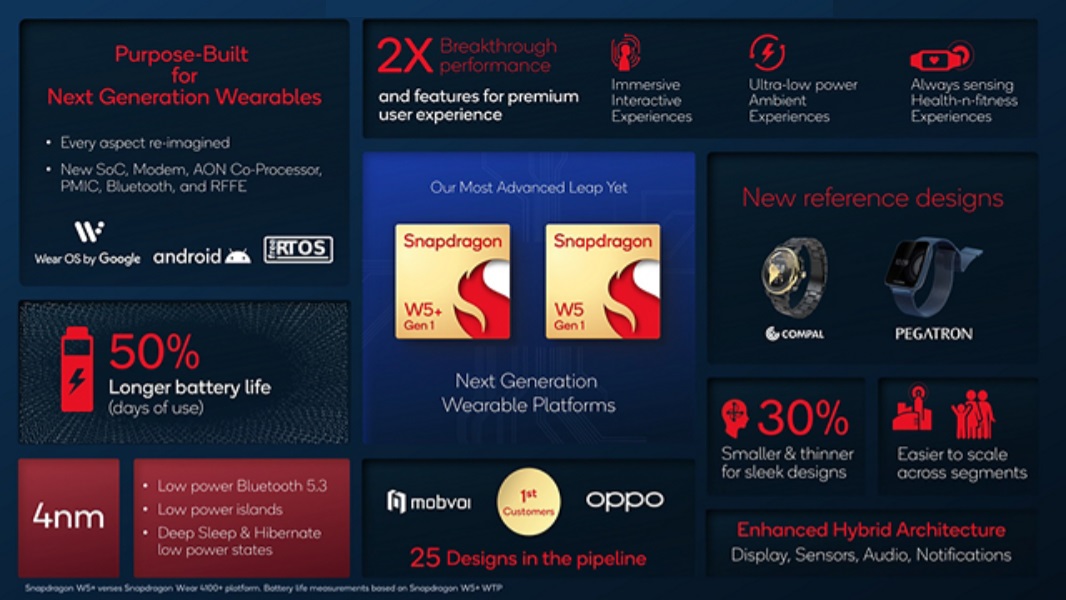Qualcomm Announces New Wearables Chipsets
- Paul Thurrott
- Jul 20, 2022
-
1

Qualcomm has announced two new chipsets aimed at wearables that use a 4 nm manufacturing process and offer improved battery life.
“The wearables industry continues to grow and present opportunities across multiple segments at an unprecedented pace,” Qualcomm senior director Pankaj Kedia said. “The new wearable platforms—Snapdragon W5+ and Snapdragon W5—represent our most advanced leap yet. Purpose-built for next-generation wearables, these platforms address the most pressing consumer needs by delivering ultra-low power, breakthrough performance, and highly integrated packaging. Additionally, we extend our proven hybrid architecture with new low-power innovations such as Deep Sleep and Hibernate states delighting consumers with premium user experiences while extending battery life.”
Windows Intelligence In Your Inbox
Sign up for our new free newsletter to get three time-saving tips each Friday — and get free copies of Paul Thurrott's Windows 11 and Windows 10 Field Guides (normally $9.99) as a special welcome gift!
"*" indicates required fields
Compared to the previous-generation Snapdragon wearables chipsets, the W5+/W5 deliver double the performance with half the power draw in a package that is 30 percent smaller. They incorporate ultra-low power Bluetooth 5.3, low power islands for Wi-Fi, GNSS, and Audio, and low power states such as Deep Sleep and Hibernate, Qualcomm says.
Qualcomm reports that its hardware partners are working on 25 designs based on the new chipsets. But Oppo and Mobvoi have already announced the first smartwatches based on the Snapdragon W5+/W5. The W5-based Oppo Watch 3 series will launch in August, and Mobvoi will ship the first Snapdragon W5+ Gen1-based watches “this Fall.”